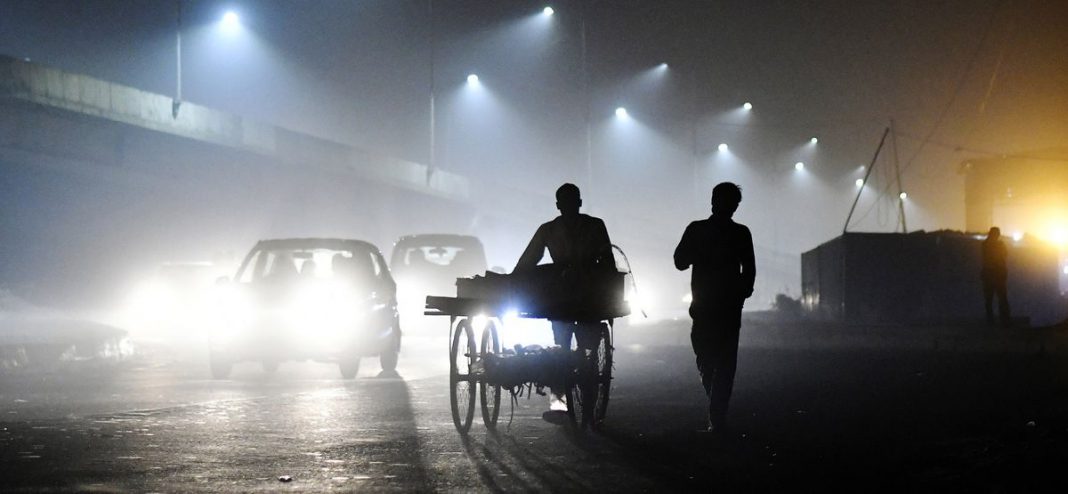India’s government informed the high court that it’s framing a new law to sort out one of many worst air pollution problems on the earth.
The government told the court that it’s drawing up a comprehensive law to check the menace. The new law is for air high-quality management within the National Capital Region and adjoining areas, and setting up a permanent body for the purpose, said India’s Solicitor General Tushar Mehta. The draft of the law would be presented in the court soon.
India’s capital along with several cities in north India is among the top polluted areas on the earth and the air high-quality index plummets to hazardous during winters. The toxic air costs the country as much as 8.5% of its gross domestic product, according to World Bank calculations, in addition to shortening the lives of residents. Authorities are prompted into motion every year, however, the air high quality has gone from unhealthy to worse within the final decade because of the burning of farm residue, coal-powered energy vegetation, automobiles, insufficient stable waste administration, festive crackers and politics.
Delhi’s Dirty Air Has Elusive Costs in a slow up Economy
“The new law can be good if it has some teeth,” said Vikas Singh, who representing petitioners, citizens of Delhi and suburbs seeking to curb air pollution. “That we can say only after the law comes,” he said over the phone.
India accounted for 21% of world sulfur dioxide emissions, which increases the risks of heart and lung diseases, mostly from coal-fired power plants that lack pollution-curbing equipment, according to a new report from Greenpeace India and the Centre for Analysis on Power and Clear Air. In distinction, China, the world’s biggest coal burner, saw SO2 discharge fall 5% last year and 87% since 2011, thanks to strengthened emission standards and increased use of scrubbers at power plants.
What Is Air Pollution?
Air pollution refers to the arrival of poisons into the air that is negative to human health and the planet overall.
The Clean Air Act approves the U.S. Natural Protection Agency (EPA) to ensure general health by controlling the discharges of these unsafe air poisons. The NRDC has been the main expert on this law since it was set up in 1970.
What Causes Air Pollution?
“Most air pollution originates from energy use and creation,” says John Walke, overseer of the Clean Air Project, part of the Climate and Clean Energy program at NRDC. “Consuming petroleum products discharges gases and synthetics into the air.” And in a particularly dangerous criticism circle, air pollution adds to climate change as well as exacerbated by it. “Air pollution as carbon dioxide and methane raises the world’s temperature,” Walke says. “Another kind of air pollution is then exacerbated by that expanded warmth: Smog structures when the climate is hotter and there’s more bright radiation.” Climate change additionally builds the creation of allergenic air pollutants including mold (on account of soggy conditions brought about by extraordinary climate and expanded flooding) and dust (because of a more extended dust season and more dust creation).
Effects of Air Pollution
“While we’ve gained ground in the course of the last 40 or more years improving air quality in the U.S. on account of the Clean Air Act, climate change will make it harder later on to satisfy pollution guidelines, which are intended to ensure health,” says Kim Knowlton, senior researcher and representative head of the NRDC Science Center.
Smog and soot
These two are the most common sorts of air pollution. Smog, or “ground-level ozone,” as it is more wonkily called, happens when discharges from combusting non-renewable energy sources react with daylight. Ash, or “particulate issue,” is comprised of minuscule particles of synthetics, soil, smoke, residue, or allergens, as gas or solids, that are conveyed in the air. The EPA’s “Plain English Guide to the Clean Air Act” states, “In numerous pieces of the United States, pollution has diminished the separation and clearness of what we see by 70%.” The wellsprings of smog and residue are comparative. “Both originate from vehicles and trucks, factories, power plants, incinerators, motors—whatever combusts non-renewable energy sources, for example, coal, gas, or petroleum gas,” Walke says. The littlest airborne particles in ash—regardless of whether they’re as gas or solids—are particularly risky on the grounds that they can enter the lungs and circulation system and compound bronchitis, lead to coronary failures, and even rush demise.
Smog can bother the eyes and throat and furthermore harm the lungs—particularly for individuals who work or exercise outside, kids, and senior residents. It’s surprisingly more dreadful for individuals who have asthma or hypersensitivities—these additional pollutants just heighten their side effects and can trigger asthma assaults.
Hazardous air pollutants
These are either destructive or have extreme health chances even in limited quantities. Very nearly 200 are managed by law; the absolute most normal are mercury, lead, dioxins, and benzene. “These are additionally frequently produced during gas or coal ignition, burning, or on account of benzene, found in gas,” Walke says. Benzene, delegated a cancer-causing agent by the EPA, can cause eye, skin, and lung disturbance temporarily and blood issues in the long haul. Dioxins, all the more normally found in food yet in addition present in limited quantities in the air, can influence the liver for the time being and hurt the invulnerable, anxious, and endocrine frameworks, just as conceptive capacities. Lead in enormous sums can harm youngsters’ minds and kidneys, and even in limited quantities, it can influence kids’ IQ and capacity to learn. Mercury influences the focal sensory system.
Polycyclic aromatic hydrocarbons, or PAHs, are harmful parts of traffic fumes and out of control fire smoke. In enormous sums, they have been connected to eye and lung disturbance, blood and liver issues, and even disease. In one late examination, the offspring of moms who’d had higher PAH presentation during pregnancy had more slow cerebrum handling rates and more awful manifestations of ADHD.
Read Also: Fasten your seatbelts


